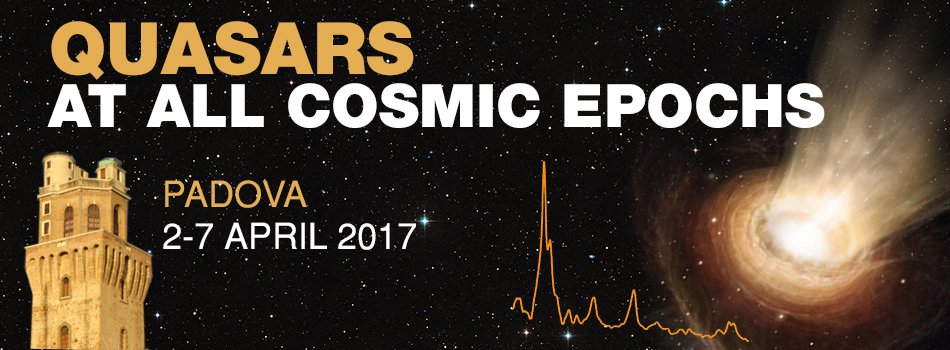Scientific Programme
The scheme planned includes review invited talks (40 min), contributed (20 min) talks, and posters. The idea behind this meeting is to discuss 5 main topics, with each topic focused on a (small) number of overarching open questions. At the end of Tuesday and Thursday afternoon sessions 40 minutes - 1 hour will be devoted to an open discussion among participants in an attempt to reach some clear answers or at least to define observational and theoretical strategies to achieve them.
Participants can vote for the best posters and the authors of three posters that will have received more votes will be awarded a talk of 15 min each in order to present their work.
Day 1: observational properties of active galactic nuclei.
This session should discuss the most relevant photometric, spectroscopic, polarimetric, and variability observations over the full SED, together with their interpretation, with attention to both statistical results and case studies. Overarching issues: still enigmatic aspects of SED - such as soft X-ray excess - systematic organization and contextualization of observational properties, radio properties of radio quiet quasars. Connection between circumnuclear star formation and nuclear activity. Selection effects that still affect major surveys.
Day 2: accretion processes on supermassive black holes.
Review/contributions on accretion disk structure and wind and jet launching processes. ADAF, especially at high accretion rate and their relation to emitting regions (continuum and lines) of quasars. Overarching issue: disk (ADAF) structure and its connection to quasar continuum and line emitting regions, from a theoretical point of view. Can we really scale up the results on stellar mass black holes to AGN black hole masses?
Day 3: connection between theory and observation.
Eigenvector 1 and luminosity effects and their interpretation in terms of accretion processes, orientation, etc. Overarching questions: why quasars come in two different species in terms of radio properties, radio quiet and radio loud? What is the connection between disk structure, relativistic ejections, and emitting regions structure?
Day 4: feedback and environment of active galaxies and quasars.
The black hole host coevolution: observational evidence and interpretation. Fueling and Feedback. Role of environment over cosmic age. Overarching questions: Which are the strongest evidences and the state of the art modeling, and which are the tests and surveys, both observational and theoretical, that can lead to progress in our understanding of fueling and feedback processes on all scales?
Day 5: quasar evolution over cosmic time and quasars as cosmological tools.
The growth of quasar population at high z; role in re-ionization; the quasars in the local Universe and the ones of a distant past; the first seed quasars and their relation to galaxy formation. Overarching questions: Do we understand quasar evolution beyond selection effects? Will quasars be helpful distance indicators?
Invited speakers
| Moshe Elitzur | University of Kentucky, USA |
| Fabio La Franca | Università Roma Tre, Italy |
| Isabel Marquez | Instituto de Astrofísica de Andalucía, Spain |
| Raffaella Morganti | Netherlands Institute for Radio Astronomy, the Netherlands |
| Hagai Netzer (conference summary) | Tel Aviv University, School of Physics and Astronomy, Israel |
| Paolo Padovani | European Souther Observatory (ESO) |
| Gordon Richards | Drexel University, USA |
| Thaisa Storchi-Bergmann | Universidade Federal do Rio Grande do Sul , Brazil |
| Jack Sulentic | Instituto de Astrofísica de Andalucía, Spain |

